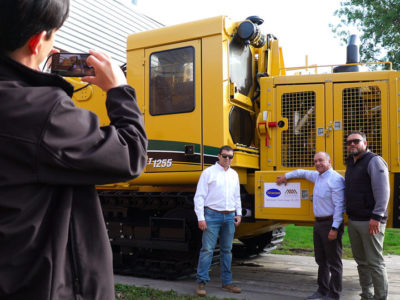Updated September 2, 2022
Welcome to the Atacama Desert: the driest place on Earth. Stretching roughly 990 miles (1,600 km) along the Pacific coast of South America, north of Chile to the southern border of Peru, it’s one of the most fascinating places on the planet. Particularly when it comes to mining production.
Atacama Desert mining is a productive endeavor — the land is verifiably rich in metallic mineral resources, such as copper, gold, iron and silver, as well as boron, lithium, sodium nitrate and potassium salts.
Chilean company Atacama Minerals is among the many mining operations extracting these valuable resources. Around the start of the new millennium, the company began mining caliche to extract iodine salts to refine into iodine pellets.
Drilling and blasting in the Atacama Desert
Initially, Atacama Minerals used another predominant method of mining, drilling and blasting. This method can present several challenges that mining companies could be forced to plan around, if possible, which include urban encroachment, environmental conservation, underground/above-ground infrastructure, and noise and vibration constraints. Additionally, government regulations and permit restrictions can dictate where and when drill and blast can be used depending on where on the globe a company is trying to mine minerals. As such, mining in the Atacama Desert using the drill and blast method wasn’t the most dependable approach.
Atacama Minerals soon realized there must be a better way.
Continuous surface mining in the Atacama Desert
“(We were) searching for an optimized process of continuous mining,” said Germán Villarroel, mine general manager at Atacama Minerals. “The decision to incorporate continuous surface mining instead of explosives was not easy. It forced us, from one way or another, to learn that we are built as a company to take some risks to grow. The only way we could achieve growth was through innovation and development.”
In 2010, the company found innovation in the form of yellow iron from Pella, Iowa, United States — the Vermeer Terrain Leveler® surface excavation machine (SEM). It delivers much MORE than rock-penetrating power. The Terrain Leveler SEM brings productivity and precision to continuous surface mining, offering an alternative to conventional mining methods like drill and blast.
Atacama Minerals put its first Vermeer T1255III Terrain Leveler SEM to work in March 2011, helping to change the company’s approach to mining.
“Continuous (surface) mining is more environmentally friendly; it allows us to reach places the conventional method does not,” said Villarroel.
Mining with the Vermeer terrain levelers SEM
Using a surface miner like the Terrain Leveler SEM to perform continuous surface mining allows companies like Atacama Minerals to methodically mine or prep a site layer by layer, optimizing productivity, maximizing precision and eliminating many of the safety challenges and restrictions associated with drilling and blasting.
The Vermeer Terrain Leveler SEM takes precision a step further. The surface miner uses GPS-engineered cutting maps, allowing operators to more easily follow a cutting path than other methods, which can involve multiple machines and steps.
Additionally, the drum of the Terrain Leveler SEM cuts from the top down to allow the teeth to gain penetration while minimizing the horsepower required for the tracks to pull the machine into the cut, thereby allowing more horsepower to be directed to the cutter drum. Other benefits of cutting from the top down include minimized material grade blending and the ability to make adjustments to the particle size by varying the depth of cut, tracking speed and drum rotation speed.
More than surface miners
At the end of the day, it isn’t just the equipment that connects Vermeer and Atacama Minerals. In 2019, members of their team made the journey from Chile to Pella to meet with Vermeer and discuss the future of Atacama Desert mining. The trip made a lasting impression on the group.
“Vermeer makes us feel like we really matter,” said Júlio Zenteno, maintenance supervisor at Atacama Minerals. “Perhaps we are small in Chile, but we feel that we are important to you.”
To learn more, watch the full story below.
This article contains third-party observations, advice or experiences that do not necessarily reflect the opinions of Vermeer Corporation, its affiliates or its dealers. Testimonials and/or endorsements by contractors in specific circumstances may not be representative of normal circumstances experienced by all customers.
Vermeer Corporation reserves the right to make changes in engineering, design and specifications; add improvements; or discontinue manufacturing at any time without notice or obligation. Equipment shown is for illustrative purposes only and may display optional accessories or components specific to their global region. Please contact your local Vermeer dealer for more information on machine specifications.
Vermeer, the Vermeer logo and Terrain Leveler are trademarks of Vermeer Manufacturing Company in the U.S. and/or other countries. © 2022 Vermeer Corporation. All Rights Reserved.
